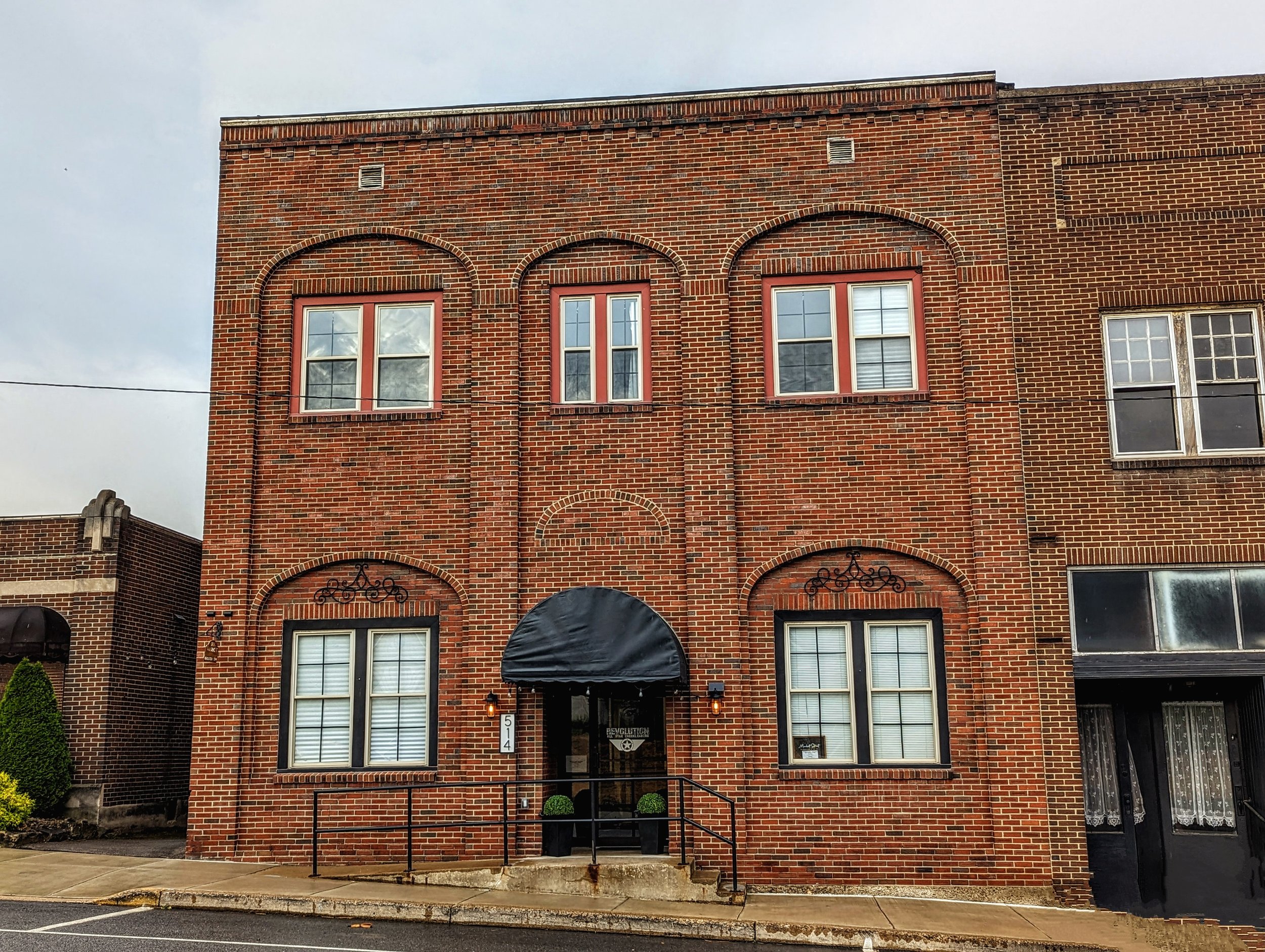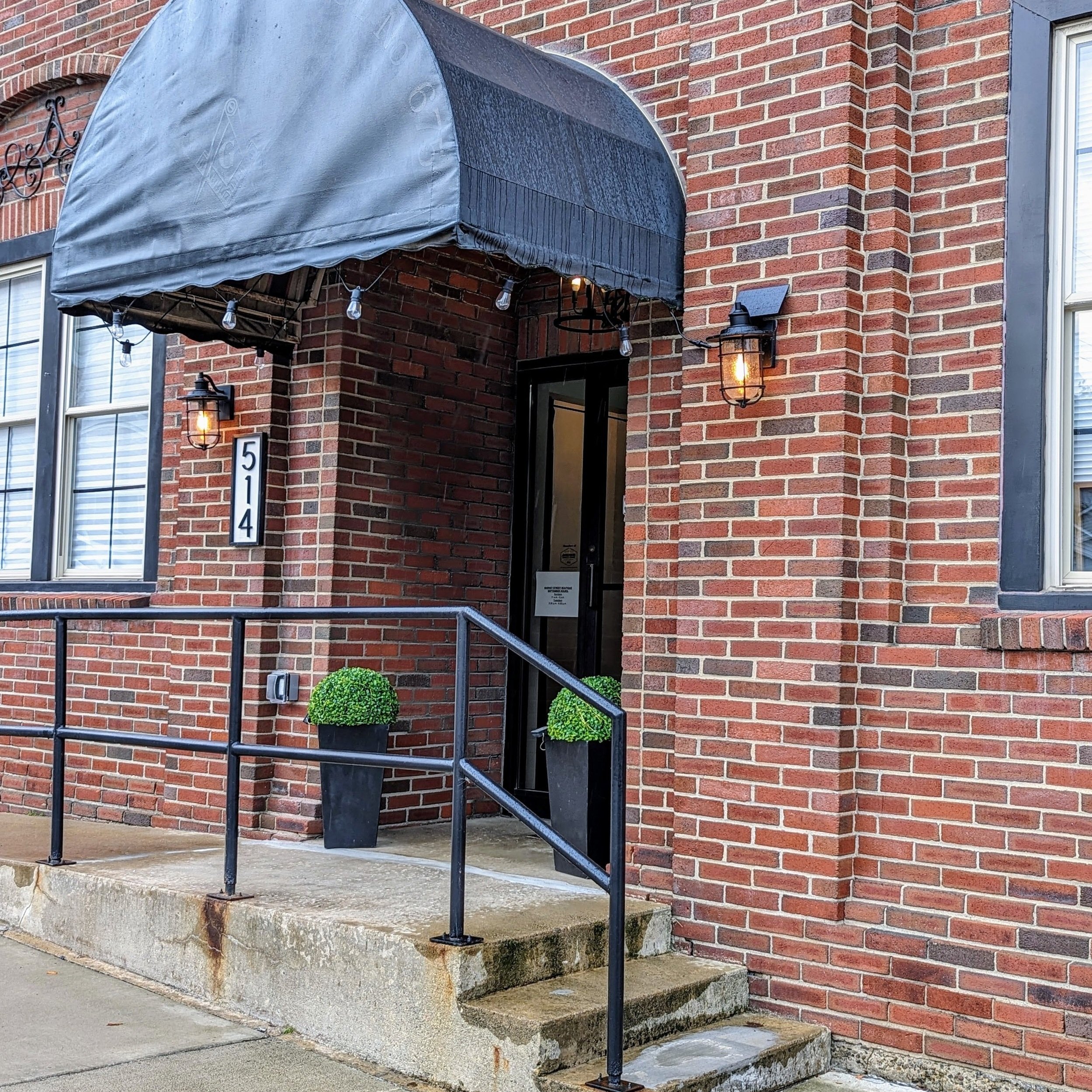Commercial Historic District Structures and Stories- 514 Market Street
There is a lot of activity in and out around 514 Market Street, Johnsonburg these days with the opening of several new businesses in the former Masonic building. The Boutique, the Rosebud Lounge, A Touch of Life Massage, Glow Airbrush Tanning, and Revolution Cheer fill up the slate of pleasant experiences one can find there.
It is great to see that old building renovated and put to such good use. Research shows that the structure was built in 1891 (Johnsonburg Sanborn Maps) but who built it is a small mystery. John W. Houser, a carpenter by trade who assisted in helping build the paper mill, built the Kendrig building (D. E. Kendrig, owner) next door in 1890 so maybe he also erected the edifice at 204 Market Street (address in 1891). Houser came to Johnsonburg in its pioneer days from Flemington, Pennsylvania with Martha Bullock who he married in 1880. They resided in Johnsonburg at least until 1914 but by 1920 John was operating a grocery store in Erie, PA and living with his daughter’s family. Besides being a carpenter and storekeeper he also was a bartender and innkeeper in his lifetime.
The place was designated as a saloon in 1898 (Johnsonburg Sanborn Maps) and further documentation shows George Spuller ran the Market Street Restaurant there for sure 1900-1903. It is noted in the July 21, 1891 edition of the Bradford Era that Mr. Spuller is having the finishing touches put on his two-story building which has an iron front (as described in the Johnsonburg Sanborn Maps). By 1905 he and family were in Niagara Falls, NY. In 1904 it is a saloon and in 1909 a saloon/restaurant and in 1916 and 1919 its designation was “office space.” (Johnsonburg Sanborn Maps). Research shows Martin McAllen, who would run the City Hotel on Centre Street, also occupied the building at one time and that Alva H. Gregory, publisher of the Johnsonburg Press, had a what-not shop in the structure at some time.
In June 1913 the rooms above the Johnsonburg Opera House were renovated for the Freemasons. The Elks Club had recently occupied the space. On November 10, 1913 the James W. Brown #675 Free and Accepted Masonic Lodge is constituted with 80 members. James W. Brown of Pittsburgh, who died in 1909, was President of Colonial Steel, a congressman (1903-1905) and a Right Worshipful Past Grand Master of the Masons. It is assumed the lodge is named in his honor.
Sometime prior to his death in 1910 Meylert M. Armstrong, paper mill owner, purchased the 514 Market Street property. It is he who likely turned the premises into office space as the Armstrong’s were known to be anti-alcohol and did not allow it on the Brick Block, which they owned through the Armstrong Realty and Land Company. In 1920 the James W. Brown Masonic Lodge bought the building from the estate of Meylert M. Armstrong but they did not occupy the premises until 1928! The building was commonly called the Acacia Club in those early days.
The Acacia tree or Acacia sprig is a symbol in Freemasonry designating “immortality of the soul.” In 1904 Freemason students at the University of Michigan organized the Acacia Fraternity for Master Masons of high moral character. This “men only” fraternal organization was apparently adopted by many Masonic Lodges across the United States. Being a Master Mason is no longer a prerequisite.
Freemasons are not a “secret society, but a society of secrets”, they have many rituals, symbols, and orders that are only known to its members. A Mason was once popularly known as a “Traveling Man,” because in ancient Europe only a Mason was permitted to travel freely from town to town, going to and from worksites. Today, the “Traveling Man” connotation means a Mason’s journey from darkness to light.
The Order of the Eastern Star Chapter #36 was constituted in Johnsonburg on June 20, 1905. The ladies’ meetings were held twice a month, first on the third floor of the W.S. Service Hardware Store (at the site of the current Cherry Square Mall), then at the Odd Fellows building (current Senior Center), after that at the Moose Club, and eventually, once the Freemasons opened up the lodge, at 514 Market Street.
The Order used the top floor and the basement kitchen extensively in the Acacia Club until 1985 when due to financial difficulties of the Masons the top floor was renovated for their meeting purposes and the first floor space rented out. Three new platforms for the Mason’s work were installed and new carpeting and paint added.
Many factors caused the demise of membership and eventual sale of the James W. Brown Masonic Building, the major reason being that Fraternal organizations no longer have the draw they once did, society has changed, the Internet, television, streaming, cell phones etc. have replaced the social interaction people once only satisfied themselves with at a club. Fraternal organizations, by their strict membership requirements, ostracized many portions of the population; America is more diverse, co-mingled, educated, and mobile than it was in the late 1800’s and 1900’s. Joining a club no longer provides the upward social mobility or comradery it once did.
It is wonderful to see 514 Market Street come to life and many thanks to the new owners and entrepreneurs for making it so, from “saloon to salon” in over 130 years, what a historical difference a simple “o” makes.
Kevin “Reg” Barwin
2023
Kevin Barwin, a Johnsonburg native, who spent his youth peddling newspapers in Johnsonburg and reading the newsprint, while walking his routes, acquired a taste for the past.
THE PAPER BOY FROM THE PAPER CITY, More on his book: here



